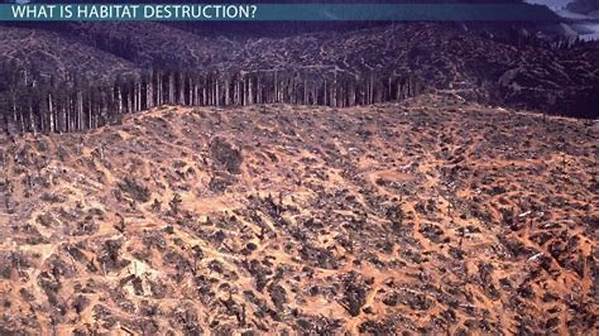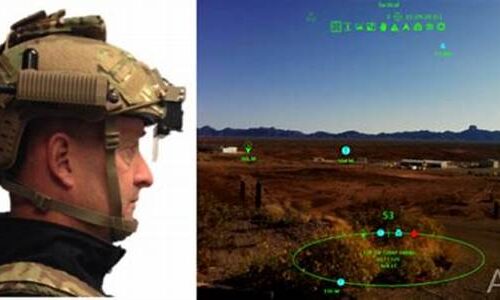In the context of contemporary global conflicts, one often overlooked consequence is the detrimental impact on natural ecosystems. The ramifications of war are multifaceted, extending beyond human and political costs, causing severe disruptions in biodiversity and natural habitats. War-induced habitat fragmentation emerges as a critical environmental issue, necessitating in-depth examination and international awareness.
The Impact of War on Natural Ecosystems
War-induced habitat fragmentation is a pressing concern that exacerbates the disruption of natural ecosystems. Conflicts often result in the destruction of habitats through the deployment of weapons, construction of military infrastructure, and unregulated exploitation of natural resources. Such activities destroy the continuity of ecosystems, leaving fragmented patches that undermine biodiversity. This fragmentation disrupts the migration patterns and breeding grounds of various species, causing irreversible damage to local flora and fauna. The ecological balance is further disturbed, leading to long-term environmental consequences. Researchers highlight an urgent need to address the repercussions of war-induced habitat fragmentation to protect our planet’s biodiversity and natural heritage.
Consequences of War-Induced Habitat Fragmentation
1. Biodiversity Loss: War-induced habitat fragmentation often leads to a significant decrease in biodiversity, as many species are unable to survive in smaller, isolated patches of habitat.
2. Ecosystem Imbalance: The fragmentation disrupts ecosystem processes, leading to imbalances that can have far-reaching implications for ecological integrity.
3. Species Migration Disruption: The severance of natural habitats impedes the migration routes of various species, affecting their survival and reproduction.
4. Increased Endangerment of Species: Fragmentation can intensify the risk of extinction for endangered species whose populations are already vulnerable.
5. Altered Predator-Prey Dynamics: Changes in habitat structures may lead to altered interactions between predators and prey, impacting food web dynamics.
Restoration Efforts and Challenges
Addressing war-induced habitat fragmentation requires coordinated international efforts and comprehensive restoration strategies. Restoration involves re-establishing connectivity between fragmented habitats to promote ecological processes crucial for wildlife. This often entails the construction of ecological corridors and reforestation programs, aimed at restoring natural linkages. However, challenges persist, including political instability, land ownership disputes, and limited financial resources. Environmental organizations often face obstacles in implementing restoration projects where conflict zones are inaccessible. Despite these difficulties, concerted efforts remain essential to counter the adverse impacts of war-induced habitat fragmentation and to initiate sustainable recovery practices worldwide.
Mitigating War-Induced Habitat Fragmentation
1. International Collaboration: To effectively mitigate the impacts of war-induced habitat fragmentation, cooperation between countries and international organizations is imperative.
2. Policy Implementation: The development of policies focused on minimizing environmental damage during conflicts can play a critical role.
3. Awareness and Education: Raising global awareness about the effects of war on natural habitats can foster a collective sense of responsibility.
4. Use of Technology: Modern technology can aid in monitoring habitat fragmentation and assist in preemptive conservation actions.
5. Community Engagement: Local communities play a vital role in implementing restoration and conservation efforts effectively.
6. Research and Innovation: Investing in research can lead to innovative solutions to tackle habitat fragmentation effectively.
7. Funding Conservation Projects: Adequate funding is crucial for successful conservation and restoration initiatives.
8. Legal Frameworks: Strong legal protections for vulnerable habitats can minimize damage during conflicts.
9. Adaptive Management: Implementing adaptive management strategies ensures that land use can be sustainably balanced with conservation.
10. Conflict Resolution: Addressing the root causes of conflict can help prevent future habitat fragmentation.
Impacts on Wildlife
War-induced habitat fragmentation has profound impacts on wildlife populations. The disruption of continuous habitats often results in isolated subpopulations, leading to increased inbreeding and reduced genetic diversity. Fragmentation also limits access to vital resources such as food and water, making survival even more challenging for animals. Wildlife that relies on specific migration routes may face difficulties in finding suitable breeding grounds. Over time, these constraints contribute significantly to declining population trends and diminished ecosystem resilience. To safeguard wildlife, proactive conservation strategies tailored to the unique challenges of war-induced fragmentation must be implemented with urgency.
Socioeconomic Implications
War-induced habitat fragmentation not only affects the environment but also has socioeconomic implications. Local communities often depend on natural resources for their livelihoods, including activities such as agriculture, fishing, and ecotourism. The degradation and fragmentation of habitats can lead to diminished resource availability and economic instability. Additionally, the loss of biodiversity and ecosystem services affects human well-being, reducing natural buffers against environmental hazards and increasing vulnerability to climate change. Therefore, it is imperative to incorporate socioeconomic considerations into conservation strategies to ensure sustainable development and support the resilience of communities impacted by war-induced habitat fragmentation.
Conclusion on War-Induced Habitat Fragmentation
In summation, war-induced habitat fragmentation presents a complex challenge with far-reaching environmental and socioeconomic consequences. The disruption of natural habitats not only leads to biodiversity loss and ecosystem imbalances but also impacts human communities dependent on these ecosystems. International collaboration, innovative conservation strategies, and robust policy implementation are paramount in addressing this issue. Given the global scale of conflicts and their environmental repercussions, it is essential to foster a collective responsibility to mitigate the adverse impacts of war. By incorporating sustainable practices and fostering community engagement, the international community can work towards preserving biodiversity and restoring ecological balance in regions affected by war-induced habitat fragmentation.





